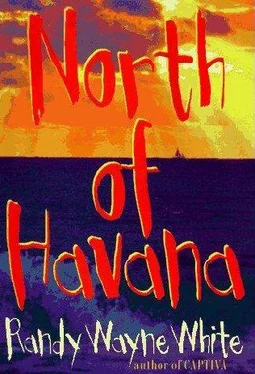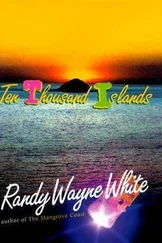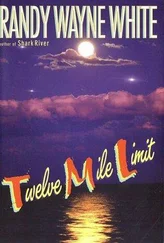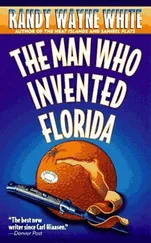Randy White - North of Havana
Здесь есть возможность читать онлайн «Randy White - North of Havana» весь текст электронной книги совершенно бесплатно (целиком полную версию без сокращений). В некоторых случаях можно слушать аудио, скачать через торрент в формате fb2 и присутствует краткое содержание. Жанр: Триллер, на английском языке. Описание произведения, (предисловие) а так же отзывы посетителей доступны на портале библиотеки ЛибКат.
- Название:North of Havana
- Автор:
- Жанр:
- Год:неизвестен
- ISBN:нет данных
- Рейтинг книги:3 / 5. Голосов: 1
-
Избранное:Добавить в избранное
- Отзывы:
-
Ваша оценка:
- 60
- 1
- 2
- 3
- 4
- 5
North of Havana: краткое содержание, описание и аннотация
Предлагаем к чтению аннотацию, описание, краткое содержание или предисловие (зависит от того, что написал сам автор книги «North of Havana»). Если вы не нашли необходимую информацию о книге — напишите в комментариях, мы постараемся отыскать её.
North of Havana — читать онлайн бесплатно полную книгу (весь текст) целиком
Ниже представлен текст книги, разбитый по страницам. Система сохранения места последней прочитанной страницы, позволяет с удобством читать онлайн бесплатно книгу «North of Havana», без необходимости каждый раз заново искать на чём Вы остановились. Поставьте закладку, и сможете в любой момент перейти на страницу, на которой закончили чтение.
Интервал:
Закладка:
"That's right. I'm driving." I capped a jerry can and started the outboard. As Geis stepped aboard, he held something out to me-the. 45, an American-made Browning. The lieutenant, with his ego, had probably enjoyed flashing it around.
I hesitated-what the hell was Geis trying to prove?- then took the weapon. As I pulled away from the dock, I twisted the tiller throttle into neutral for a moment, listening. Up at the office, was the telephone ringing?
Geis seemed to hear something, too. He said, "If we're going to go, let's go."
18
The northern coast of Cuba: bluffs and lowlands, gray and parrot green; a vectoring shoreline that is awash in the sea mass from which it rises. I ran the Avon as fast as I could make it go-forty, forty-five miles an hour-until the water changed beneath us; changed from a turbid brown to purple-black in shafts of clear sunlight, and I throttled back on hill-sized swells because I knew that Mariel was behind us.
The breeze was freshening out of the east, seas five to seven feet but not capping, the bulk of Cuba providing us wind-shadow.
"You want some advice, I'd stay way outside that reef line. You try to run between the shore and all that coral, you'll kill the boat and probably kill us, too."
I didn't want Geis's advice. But I did need his knowledge.
"You ever try it?"
"Hell no. But then I was always in a boat that made sense. Not in one of these little pieces of shit." The guy was settled back, arms thrown over the rubber-hard tubes of the Avon as if it were a couch. Still enjoying himself.
"But you do know this section of coast. You'll be able to point out La Esperanza when we get there."
"You get me there alive, I'll recognize it. And if something does happen to me"-he was reaching into his day pack-"you got this. Don't say I never gave you anything."
It was a topographical map, not a coastal chart. But that was fine if it covered enough area. I slowed the boat but still had to battle the wind to get the map open and folded to the right sector. I held it in a tight little square and returned to speed, glancing from open water ahead to the coast of Cuba drawn in relief.
It showed the village of La Esperanza-a tiny place right at sea level, with a marked channel to the northwest just off an appendage of land called Punta Lavandera. But it was all lowland; no headlands that could be easily recognized. If I passed by Punta Lavandera, what landmark would I look for?
There was a large island just off La Esperanza that ran east and west, then jagged southwest. A very strangely shaped island. Its name was Cayo de Soto. Cayo de Soto was maybe six or seven miles long, curved like an arched prawn, the eastern point creating the prawn's horn, the broader southwestern section the prawn's tail. No lighthouse on the eastern point of the island-a good place to put one-but I would know my location by the size and odd shape of the island and be able to turn into a bay… a place called the Bay of Playuelas.
I folded the map, then put it into my pants pocket. I steered for a while, trying to ignore the back of Geis's head, focusing on wave rhythms and optimum speed, seeing the bottom through a water stratum that thinned and deepened, jade tinted and clear, buoying us above deserts of white sand, mesas of coral, our boat shadow following the demarcations of light and depth far, far below.
Then for no reason that made sense, I thought: Lighthouse.
Why did a lighthouse come to mind?
I thought about the map. There were several landmarks but no lighthouses. So why lighthouse?
I kept steering, heading west. That word would come into my mind, stay for a while, then fade.
But it kept returning.
Lighthouse…
I drove and let my subconscious work on it.
We were a mile or so off the reef line that fenced mainland Cuba from open sea, two miles or so from what was now jungled shoreline. I figured we'd been traveling an hour and a half or so-it was now nearly three P.M.-and that we'd covered thirty, maybe thirty-five miles. Saw thatched-roofed shacks built among coconut palms on the beach. A lone man on a horse. Listened to Geis tell me about his prostitute in Havana-"Everything I told you was the truth; about her, about Castro, about Cuba, everything. That's the only way to convince guys like us"-but I kept thinking: Lighthouse?
Finally, I took out the map and looked at it again. I paid particular attention to Cayo de Soto. Yes, the eastern point of the island would be a good place for a lighthouse, but why did that strike a chord?
I had almost put the map away a second time when I realized what the connection was. Made myself look away, then look again. Months later, I would find myself reviewing a map of coastal Cuba just to be certain I hadn't imagined it: Cayo de Soto, shaped like an arched prawn, was the inverted twin of Sanibel Island. It was as if someone had inked a map, folded it, and stamped a carbon copy of Sanibel on the northern coast of Cuba. Sat there at latitude 22 degrees 45.7 minutes north, longitude 83 degrees 50.5 minutes west, for anyone with a chart to see.
The islands of Florida and the Caribbean are often similar in shape. Forces of tide and wind are immutable, so the landmasses they contour become a repetition of theme.
But not Sanibel.
Sanibel, because it was formed over the millennia by an unusual confluence of river and tidal flow, was very different.
So was Cayo de Soto.
The lighthouse meant nothing-it was the distinctive eastern point of the island that had keyed the memory electrodes. And, perhaps, the smaller islands clustered around the prawn's belly… and the narrow Blind Pass-sized opening at the western end. But none of that was as compelling as the amoeba-shaped bay-a Cuban version of Dinkin's Bay-sitting just below the hump of the arched prawn. Sanibel's mangrove littoral was on the northern side, Cayo de Soto's on the south, but they were duplicates other than that. It was so obvious that I wondered why I hadn't noticed it immediately.
To me it was a geographical oddity. To a mystic like Tomlinson, under the influence of peyote and pressured to pick a spot on a map near La Esperanza, the similarities would register subconsciously-as they had with me-or consciously… something he would interpret as a divine message.
I put the map away and said to Geis, "1 know where they are."
Geis, for some reason, seemed concerned. He was looking past me off our stern. "I was hoping you'd noticed. Hotshot boatsman that you are."
What did that mean?
I glanced over my shoulder and saw a cruiser a mile or so away, closing on us. A high-bowed patrol boat; the Guardia Frontera.
"Slow down, let them pass us. Or stop and let them ask us for papers-what the hell do we care?"
Meaning he would talk us out of it. Or shoot our way out of it.
I twisted the throttle for maximum speed. "I'm not stopping. We can outrun them."
"The patrol boat, maybe. But not them."
I glanced over my other shoulder and saw some kind of small power boat-it looked like a Whaler-so overpowered that its engine threw a rooster tail of spray behind it.
I turned sharply toward the reef line. Said, "We can try."
The reef appeared as an extended hedge of black upon which ocean rollers exploded, throwing white spume that created a jagged and shifting border westward, down the coast. The way the sunlight caught the surf line, the breakers appeared to be moving in slow motion, like polar ice, mica and silver. I had to find a way through the coral into the calmer, much shallower water that lay between the mainland and the reef.
"Stop, goddamn it! If we run, they'll open fire without asking any questions. For all we know, they just want to search us because they're bored." Geis had turned to face me; he was sitting on the wooden decking, his back against the bow. Already, we were taking some spray and his shirt, his red hair were soaked.
Читать дальшеИнтервал:
Закладка:
Похожие книги на «North of Havana»
Представляем Вашему вниманию похожие книги на «North of Havana» списком для выбора. Мы отобрали схожую по названию и смыслу литературу в надежде предоставить читателям больше вариантов отыскать новые, интересные, ещё непрочитанные произведения.
Обсуждение, отзывы о книге «North of Havana» и просто собственные мнения читателей. Оставьте ваши комментарии, напишите, что Вы думаете о произведении, его смысле или главных героях. Укажите что конкретно понравилось, а что нет, и почему Вы так считаете.












